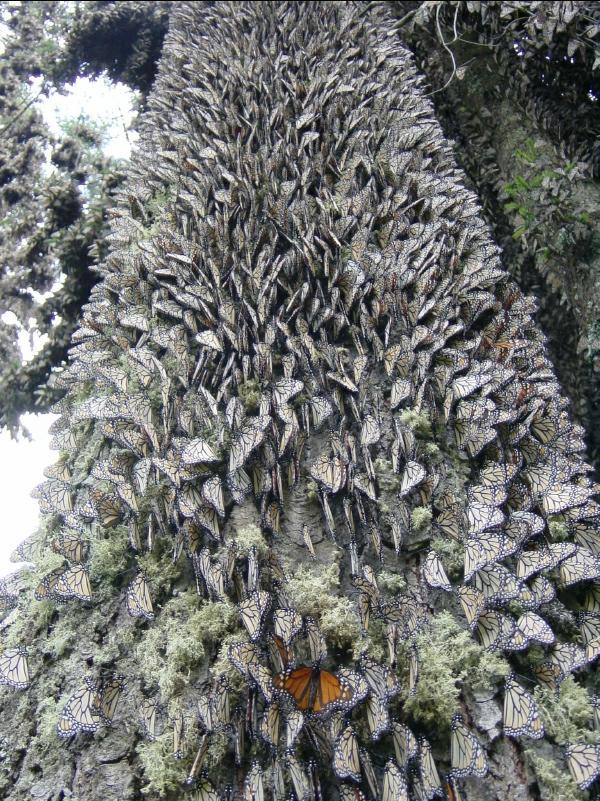At the intersection of science and nature, an unexpected alliance is blossoming at the Phoenix crime lab. Monarch butterflies, famed for their striking orange wings and remarkable migration, have found a surprising refuge amid the high-tech world of forensic investigation. This unusual partnership highlights not only the lab’s commitment to environmental stewardship but also the fascinating ways wildlife can thrive in urban spaces. As forensic experts unravel mysteries through cutting-edge techniques, they are now also safeguarding a critical habitat for one of North America’s most beloved pollinators.
Monarch Butterflies’ Surprising Sanctuary at Phoenix Crime Laboratory
Amidst the sharp scent of chemicals and the hum of forensic machinery, an unexpected burst of life has emerged at the Phoenix crime laboratory. Monarch butterflies, known for their delicate beauty and long migratory journeys, have found a surprising sanctuary within the lab’s carefully cultivated garden. Staff members discovered that these iconic insects are thriving in a space once thought to be solely dedicated to criminal investigations, turning the forensic grounds into an accidental but vital habitat.
Experts attribute this phenomenon to several green initiatives embraced by the lab, which include:
- Planting native milkweed species essential for monarch caterpillar nourishment
- Reducing pesticide use to maintain a safe environment for pollinators
- Implementing water conservation techniques that also support local flora and fauna
These efforts have transformed the crime lab’s courtyard into a buzzing ecosystem, where science and nature intersect. The presence of the monarch butterflies not only enhances biodiversity but also provides an unexpected symbol of renewal and hope in a place dedicated to solving some of the city’s toughest challenges.
The Role of Forensic Facilities in Supporting Urban Wildlife Habitats
Amid the bustle of criminal investigations, Phoenix’s forensic facilities have emerged as unexpected sanctuaries for urban wildlife, particularly the endangered monarch butterfly. The laboratory’s carefully curated garden spaces provide vital nectar and breeding grounds, contributing to local biodiversity while reinforcing the facility’s commitment to sustainability. This unique integration of forensic science and ecological stewardship demonstrates how urban institutions can support wildlife habitats, even in densely populated cities.
Key features highlighted include:
- Pollinator-friendly plantings: Native flowers attracting monarchs and other beneficial insects.
- Habitat corridors: Connecting green spaces that allow safe passage for wildlife across urban landscapes.
- Environmental monitoring: Forensics staff collaborate with ecologists to track butterfly populations and habitat health.
| Forensic Facility Initiatives | Environmental Impact |
|---|---|
| Native Wildflower Plantings | Increased pollinator visits by 45% |
| Butterfly Waystations | Habitat connectivity improved |
| Educational Signage | Raised public awareness |
How Integrating Native Plants Enhances Butterfly Conservation Efforts
By incorporating native plants into urban landscapes, especially around areas like the Phoenix crime lab, conservationists are creating vital refuges for monarch butterflies and other pollinators. These plants provide essential nectar sources and host plants for caterpillars, ensuring the butterflies have both food and breeding grounds. Unlike non-native species, native plants are adapted to local soil, climate, and pollinators, which results in healthier ecosystems and supports butterfly populations more effectively. Their deep roots also help maintain soil moisture and reduce erosion, creating stable microhabitats critical during arid seasons.
Key benefits of native plants for butterfly conservation include:
- Providing year-round nectar sources and larval host plants
- Supporting local insect biodiversity and predator-prey balances
- Reducing water use compared to exotic landscaping
- Increasing habitat connectivity between urban green spaces
| Native Plant | Butterfly Species Supported | Bloom Season |
|---|---|---|
| Milkweed (Asclepias spp.) | Monarch | Spring to Fall |
| Desert Marigold | Queen Butterfly | Spring to Summer |
| Mexican Bush Sage | Swallowtail | Summer to Fall |
Recommendations for Crime Labs to Promote Biodiversity Through Green Initiatives
Integrating native plants into the landscaping of crime labs can create natural habitats that support local wildlife, particularly pollinators like monarch butterflies. By choosing indigenous flora that blooms at varying times throughout the year, labs can provide a continuous source of nectar and breeding grounds. These green spaces not only enhance the aesthetic appeal of the facilities but also contribute to vital ecological cycles, fostering a healthier urban environment.
- Implement butterfly gardens with milkweed species to attract monarchs
- Use organic pest management to avoid harming beneficial insects
- Incorporate rain gardens for natural water filtration and wildlife support
- Educate staff on biodiversity importance through onsite workshops
Adopting sustainable practices within laboratory operations helps reduce environmental impacts and sets a strong example for conservation efforts. Energy-efficient systems and waste reduction protocols can limit pollution and resource consumption, indirectly supporting broader biodiversity. Collaboration with local environmental groups for habitat restoration projects can further elevate the lab’s role as a community partner in conservation.
| Initiative | Benefit | Action Step |
|---|---|---|
| Native Planting | Supports local pollinators | Install year-round bloom species |
| Organic Pest Control | Protects beneficial insects | Use natural predators and bio-pesticides |
| Energy Efficiency | Reduces carbon footprint | Upgrade to LED lighting and efficient HVAC |
| Community Outreach | Raises public awareness | Host educational tours and workshops |
In Retrospect
As the Phoenix crime lab continues to uphold justice by unraveling complex cases, its unexpected role as a sanctuary for monarch butterflies highlights a compelling intersection of science and nature. This unique refuge not only supports the survival of a vital pollinator species but also serves as a reminder that even the most unlikely places can contribute to ecological conservation. In blending forensic investigation with environmental stewardship, the Phoenix facility exemplifies how innovation and responsibility can coexist in surprising and inspiring ways.







